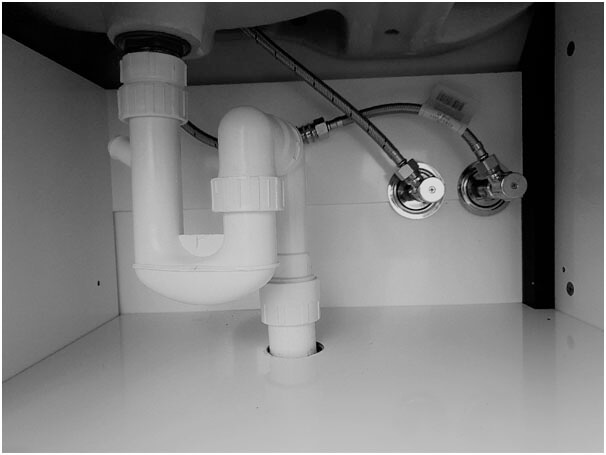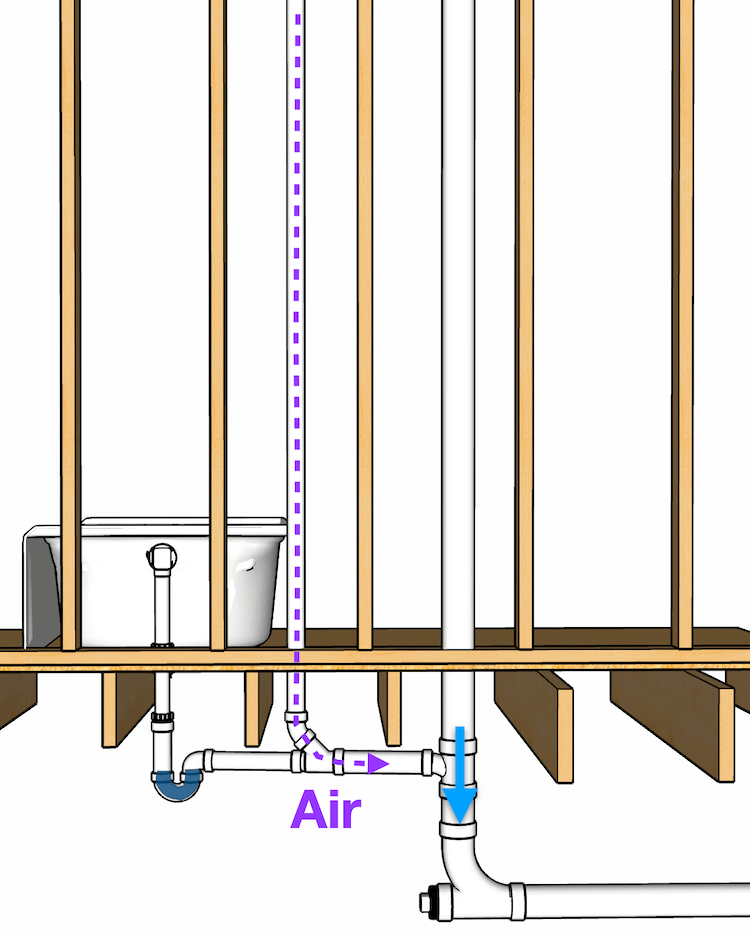The Role of Correct Ventilation in Ensuring Plumbing Systems
The Role of Correct Ventilation in Ensuring Plumbing Systems
Blog Article
Do you find yourself in search of resources around What Are Plumbing Vents and Why Are They Important??

Correct air flow in pipes systems is frequently forgotten, yet it is important for maintaining the functionality and safety and security of your home's plumbing. Ventilation helps regulate atmospheric pressure, prevent the accumulation of hazardous gases, and guarantee the efficient elimination of waste. In this guide, we will certainly explore the value of appropriate pipes air flow, how it works, and the advantages it gives your pipes system.
Recognizing Ventilation in Plumbing
Air flow in plumbing refers to the network of pipes that allow air to stream via the drain system. These vents offer several objectives, consisting of regulating air pressure within the pipelines, stopping drain gases from going into the home, and helping in the smooth flow of wastewater.
Exactly How Ventilation Works in Pipes Solutions
Air Pressure Regulation
Proper air flow preserves balanced air pressure within the plumbing system. When water flows through pipelines, it displaces air. Without sufficient air flow, this variation can produce unfavorable stress, leading to slow drains or siphoning of water from catches, which can cause undesirable odors to leak right into the home.
Preventing Drain Gas Accumulation
One of the most crucial features of pipes vents is to prevent sewage system gases, such as methane and hydrogen sulfide, from gathering within the home. These gases can posture significant health dangers and are highly flammable. Vent pipelines enable these gases to leave securely outdoors.
Aiding in Waste Elimination
Air flow assists in the reliable elimination of wastewater by avoiding airlocks in the water drainage system. When air can stream openly through the vents, it permits water and waste to flow smoothly via the pipelines, decreasing the danger of clogs and backups.
Types of Plumbing Vents
Key Stack Vent
The primary stack air vent, also referred to as the vent stack, is the primary vent in a plumbing system. It expands from the major drainpipe line up via the roofing system, allowing gases to escape and fresh air to get in the system.
Branch Vent
Branch vents attach to the major stack air vent and offer private components, such as sinks, commodes, and showers. These vents make sure that each fixture has appropriate air flow to work correctly.
Air Admittance Valve (AAV).
An Air Admission Valve (AAV) is a one-way shutoff that permits air to get in the pipes system without the demand for a traditional vent pipeline extending with the roofing. AAVs are frequently used in restorations or areas where setting up a basic vent is unwise.
Indicators of Poor Air Flow in Plumbing.
Slow Draining Fixtures.
If your sinks, tubs, or toilets are draining pipes gradually, it could be an indication of bad air flow. Poor air circulation can produce a vacuum result, making it tough for water to drain properly.
Gurgling Appears.
Gurgling sounds originating from drains are often an outcome of air being sucked with water catches due to unfavorable stress in the pipes. This is a clear indication of insufficient ventilation.
Unpleasant Smells.
Sewer odors inside your home are a warning that your plumbing system is not properly aerated. This might imply that sewage system gases are not being effectively vented outside, causing potentially dangerous problems.
Typical Air Flow Blunders.
Inadequate Vent Sizing.
Using small air vent pipes can cause inadequate air circulation and stress imbalances in the system. It's important to utilize vents that meet the particular demands of your plumbing system.
Improper Vent Positioning.
Positioning vents as well much from the fixtures they offer can minimize their effectiveness. Proper positioning ensures that air can move freely and successfully through the system.
Disregarding Code Requirements.
Building ordinance give particular standards for plumbing ventilation. Overlooking these codes can result in a system that stops working to operate properly and might cause pricey fixings or health hazards.
Advantages of Correct Ventilation.
Boosted System Effectiveness.
Properly aerated pipes systems operate extra efficiently, with fewer obstructions, faster draining, and much less pressure on the pipes. This effectiveness expands the lifespan of the plumbing system.
Improved Air High Quality.
By protecting against sewer gases from entering your home, appropriate air flow adds to far better interior air quality, making your living environment healthier and much more comfortable.
Stopping Water Damage.
Sufficient ventilation aids protect against water from being siphoned out of catches, which can cause drain gases getting in the home and creating water damage over time.
Actions to Make Sure Appropriate Ventilation.
Consulting Plumbing Codes.
Always seek advice from local pipes codes when making or modifying your pipes system. These codes provide the essential standards for proper venting and ensure your system fulfills safety requirements.
Normal Inspection and Upkeep.
Regular assessments can assist recognize possible air flow concerns prior to they come to be significant issues. Upkeep jobs, such as cleansing vent pipes and checking for clogs, are important for maintaining the system in good working order.
Expert Setup.
For new setups or significant alterations, it's wise to hire an expert plumbing professional. They have the experience to guarantee the air flow system is appropriately created and installed according to code.
Final thought.
Proper ventilation is an important part of any type of pipes system, making sure that it works successfully and safely. By understanding the value of air flow, recognizing the signs of bad air flow, and taking actions to maintain your system, you can avoid expensive issues and safeguard your home's air high quality.
4 Things You Should Know About Your Plumbing Vents
What Plumbing Vents Are
Also called a vent stack, a plumbing vent is a vertical pipe attached to your drain line that runs through your roof. The plumbing vent pipe, or plumbing air vent, removes gas and odors from your plumbing system and allows fresh air to enter the pipes, helping the water to flow out of the drain pipes.
What Plumbing Vents Do
Plumbing vents have two basic functions. One of which is to allow unpleasant smelling wastewater and sewer gasses to escape your plumbing system instead of entering your home. Plumbing vent pipes are typically located on roofs, away from windows, to ensure the fumes exit the home completely.
The other function of the plumbing vent is to move fresh air into your plumbing system. This helps move water through every plumbing fixture in your house, like toilets and sink drains. Think of the way in which you need to let a little air into the bottle as you pour soda in order to make the drink flow smoothly.
Different Types of Plumbing Vents
True vent: This is the most common vent option. In simplest terms, a true vent is a vertical pipe attached to your drain line that exits through the roof. They often function as the main vent that other fixtures can connect to. Re-vent pipe or auxiliary vent: Attached to the drain line near specific plumbing fixtures, re-vent pipes run up and over to connect to the main vent. Common vent: Two plumbing fixtures installed on opposite sides of a wall are typically tied into the vent stack using something known as a sanitary cross. Wet vent: This venting option operates as a drain pipe and a vent at the same time. Wet vent drainage systems drain water from one fixture while venting the air from another. Although they’ve been used for over 100 years, wet vent systems have only recently been added to the plumbing code in many areas. If you’re planning on installing one in a bathroom remodel, make sure you check your local code prior to construction. Loop vent: For free-standing fixtures like kitchen island sinks, loop vents are ideal. These vent pipes run under the floor, rise from the P-trap, and create a loop inside the cabinet sink. Air admittance valve: An AAV is a one-way mechanical valve typically installed at the site of the plumbing fixture. AAVs allow venting to occur without having to tie into a larger venting system. They’re ideal for venting fixtures where you aren’t able to easily connect to an existing vent system. Common Plumbing Vent Issues
Although vent pipes typically don’t have water flowing through them, they’re still subject to many typical plumbing issues. For example, clogs are one of the most common problems associated with sewer vent pipes. If your vent pipe gets clogged, all of your plumbing fixtures tied into the vent stack will be affected.
A sink with a slow drain that bubbles and gurgles or a strong sewage smell around your toilet are both indicators that your toilet vent pipe is clogged. Because most vent pipes exit through the roof, old leaves, twigs or even a bird’s nest could be clogging the pipe.
Clogs in your vent pipe system cause a buildup of negative pressure, meaning that water won’t be able to flow out of your home very well. It’s similar to putting your finger over the opening of a straw to trap water inside. When you remove your finger, the water is able to flow out of the straw.
If you suspect you have any blockage in your vent, make sure you have a professional come examine the situation. Left unchecked, a blocked air vent can lead to other costly repairs, like leaks and sediment buildup.
Under Pressure
Pipe vents are essential aspects of a home’s plumbing system. Owning a home means learning about all sorts of things you never put much thought into before. But by understanding as much as you can about the important systems of your home, you can keep those budgets intact and those anxiety levels low.
https://www.homeserve.com/en-us/blog/home-improvement/plumbing-vents/

As an enthusiastic reader on What Is a Plumbing Vent and Why Is It Important, I assumed sharing that excerpt was smart. For those who enjoyed our page please do not forget to share it. I appreciate reading our article about The Upsides of Proper Ventilation in Plumbing Design.
Click For More Information Report this page